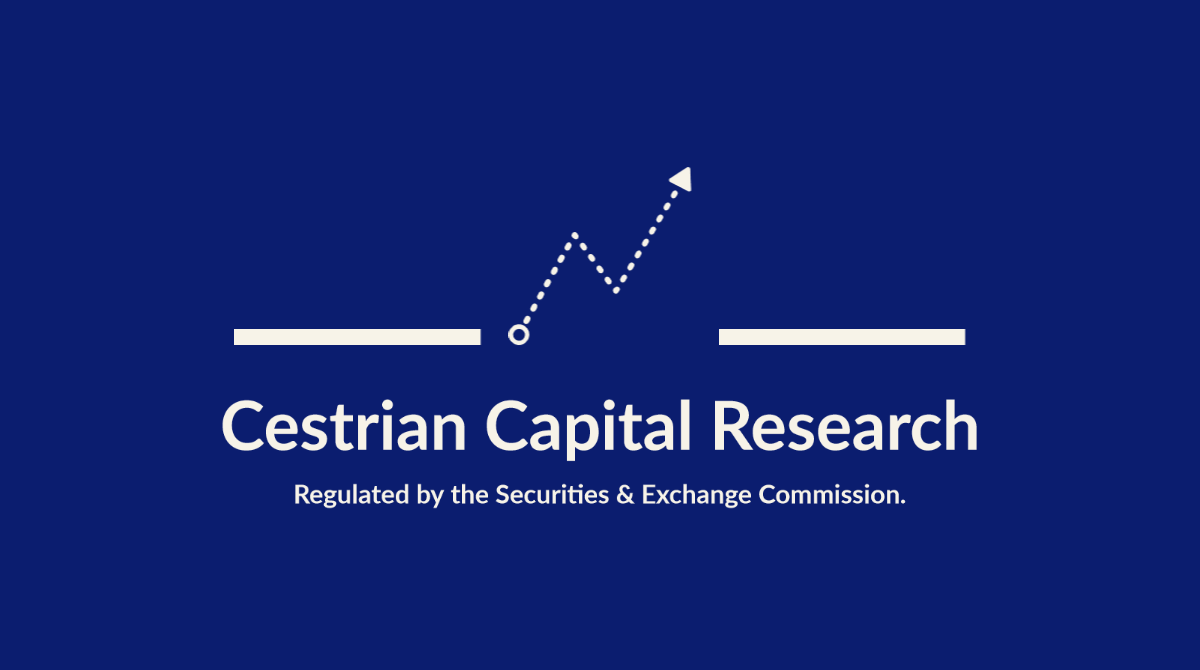Will The Market PUMP or DUMP Post Election?

DISCLAIMER: This note is intended for US recipients only and, in particular, is not directed at, nor intended to be relied upon by any UK recipients. Any information or analysis in this note is not an offer to sell or the solicitation of an offer to buy any securities. Nothing in this note is intended to be investment advice and nor should it be relied upon to make investment decisions. Cestrian Capital Research, Inc., its employees, agents or affiliates, including the author of this note, or related persons, may have a position in any stocks, security, or financial instrument referenced in this note. Any opinions, analyses, or probabilities expressed in this note are those of the author as of the note's date of publication and are subject to change without notice. Companies referenced in this note or their employees or affiliates may be customers of Cestrian Capital Research, Inc. Cestrian Capital Research, Inc. values both its independence and transparency and does not believe that this presents a material potential conflict of interest or impacts the content of its research or publications.
The Market In Front Of You vs. The Market In Your Head
Calling the market right now is pretty tough in my view, and I speak as someone who (1) makes a living calling the market and (2) does a generally not-too-shabby job of it.
Market participants right now are suffering from a latter-day version of pre-Millenium tension, a psychological curio from the late 1990s. No not because of those NVDA = CSCO charts. Because election. And this tension is blinding a lot of people to the market in front of them; instead they are seeing the market in their head. A common condition but one that at peak event risk tends to become more widespread.
If you like you can try to guess who wins the election and then guess what their legislative program will be and try to guess if any of that policy actually gets implemented and if so what happens to which stock. If you can do that successfully, kudos to you.
Personally I prefer to rely on the same pattern-recognition methods as always. Charts, as always, offer a clue to future price paths because future price paths are informed by, well, the prior price path. This week we have not just the election but also FOMC; factor in the uncertainty around the rate decisions and the market's reaction to those decisions and ... can you really make any kind of sensible assessment of securities pricing based on the range of possible outcomes in the next few days? I think that is the toughest way of all to try to call markets.
In place of today's Market When Closed note, I'd like to share the video below. It's the recording of today's live webinar from our Inner Circle service. I'd like to share this for two reasons.
The first is that if you aren't already an Inner Circle subscriber, I naturally think you should be. You can read all about the service here, and read some recent testimonials (from actual paying members!) here. We run this webinar every week. It's one of my favorite parts of the working week.
The second is that it is really difficult to work out even from charts where we may be headed. And the short-form commentary you get in the daily Market On... note doesn't really do the situation justice. In this video we walk through what the bond market is telling us; what the volatility and oil markets are saying; what leading stocks indicate; and what all that may mean for equity markets at large. It's worth watching.
Any questions, comments, agreements, disagreements, whatever, hit me up in Slack Chat if you're an Inner Circle member, or in comments to this note if you're not. Or, indeed, in comments to the YouTube video on the YouTube site.
Have at it folks!
